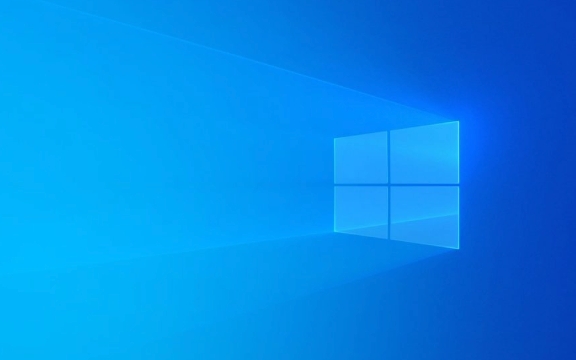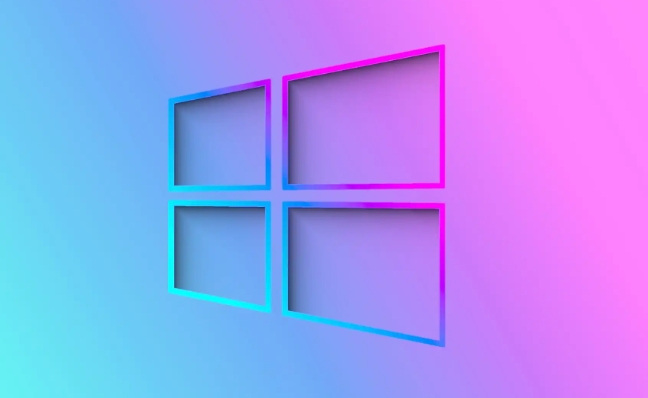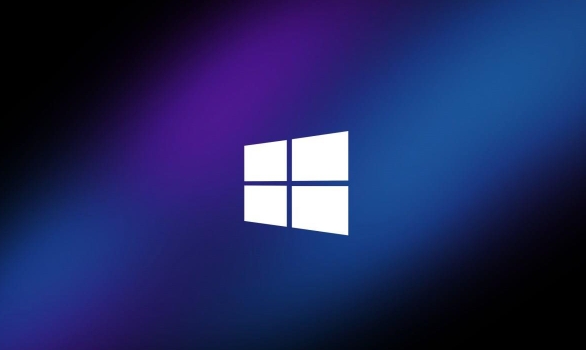 Computer Tutorials
Computer Tutorials
 Computer Knowledge
Computer Knowledge
 Understanding Different Video Ports: HDMI vs. DisplayPort vs. USB-C
Understanding Different Video Ports: HDMI vs. DisplayPort vs. USB-C
Understanding Different Video Ports: HDMI vs. DisplayPort vs. USB-C
Jul 26, 2025 am 08:46 AMHDMI, DisplayPort and USB-C each have different uses, and should be selected according to the device and needs: 1. When using HDMI, it is suitable for connecting to TV or home theater systems. The device does not support DisplayPort or video output USB-C, and pursues the simplicity of plug-and-play; 2. When using DisplayPort, it is suitable for high refresh rate gaming monitors, multi-display series connection, or desktops with independent graphics cards; 3. When using USB-C, it is suitable for thin and light notebooks with limited ports, and video output, data transmission and charging must be achieved through a single line. Note that device compatibility, wire quality and adapters may limit performance. HDMI focuses on home entertainment, DisplayPort is designed for high-performance PCs, and USB-C provides the best flexibility of modern portable devices.

When connecting a display to a laptop, desktop, or gaming console, you're likely faced with a few different video port options: HDMI, DisplayPort, and USB-C. While they all serve the purpose of transmitting video (and often audio), they're not interchangeable in every situation. Understanding the differences helps you make the right choice based on your devices and needs.

HDMI: The Most Common Choice
HDMI (High-Definition Multimedia Interface) is the go-to port for most consumer electronics. You'll find it on TVs, monitors, projects, gaming consoles, and streaming devices.
- Widely compatible : Almost every modern display device supports HDMI, making it the most universal option.
- Supports audio and video : HDMI carries both signals over a single cable, simplifying setup.
- Versions matter : HDMI 2.0 supports 4K at 60Hz, while HDMI 2.1 can handle 4K at 120Hz or even 8K at 60Hz—important for gaming and high-end media.
- Cable quality varies : Not all HDMI cables support higher bandwidths. For 4K/120Hz or HDR, make sure you're using a Premium or Ultra High Speed HDMI cable.
HDMI is ideal for home entertainment systems and general use, but it has limitations in high-refresh-rate or multi-monitor professional settings.

DisplayPort: Built for Performance
DisplayPort is primarily found on PCs and high-performance monitors. It's designed with desktop computing and professional applications in mind.
- Higher bandwidth than HDMI (in latest versions) : DisplayPort 1.4 supports up to 8K at 60Hz or 4K at 120Hz with DSC (Display Stream Compression). DisplayPort 2.0 pushes this even further.
- Better for daisy-chaining : You can connect multiple monitors in series using a single output (if monitors support it).
- Preferred for gaming and productivity : Many high-refresh-rate gaming monitors (144Hz and above) use DisplayPort because it reliable supports those rates at 1080p and 1440p.
- No licensing fees : This has helped it remains popular in the PC space.
If you're a gamer or use multiple high-resolution displays, DisplayPort is usually the better choice.

USB-C: The Versatile All-in-One Port
USB-C is a physical connector type, not a video standard on its own. But when it supports DisplayPort Alt Mode or Thunderbolt 3/4 , it can carry video signals.
- Compact and reversible : The USB-C plug is small and easy to use.
- Multi-function : Can deliver video, audio, data, and power over a single cable.
- Power delivery : Can charge your laptop while outputting video—great for docking setups.
- Not all USB-C ports support video : Check your device specs. Some USB-C ports only handle data and charging.
- Adapters are common : You can use USB-C to HDMI or USB-C to DisplayPort cables or adapters.
USB-C shines with ultrabooks and modern MacBooks, where minimum ports demand maximum versatility.
When to Use Which?
Here's a quick guide:
-
Use HDMI if :
- Connecting to a TV or home theater system.
- Your device doesn't have DisplayPort or video-capable USB-C.
- You want plug-and-play simplicity.
-
Use DisplayPort if :
- You're using a high-refresh-rate gaming monitor.
- You need multi-monitor daisy-chaining.
- You're on a desktop PC with a dedicated graphics card.
-
Use USB-C if :
- You have a slim laptop with limited ports.
- You want to power and connect a monitor with one cable.
- Your monitor supports USB-C input (common in premium models).
A Few Things to Watch Out For
- Check your source device's capabilities : A USB-C port doesn't guarantee video output.
- Cable quality matters : Cheap cables may not support higher resolutions or refresh rates.
- Adapters can limit performance : Converting from USB-C to HDMI might cap you at HDMI 2.0 speeds, even if the source supports more.
Basically, HDMI is the standard for living rooms, DisplayPort excels in performance PC settings, and USB-C offers flexibility—especially for modern portable devices. Knowing what each port brings to the table helps you get the most out of your display without unecessary hassle.
The above is the detailed content of Understanding Different Video Ports: HDMI vs. DisplayPort vs. USB-C. For more information, please follow other related articles on the PHP Chinese website!

Hot AI Tools

Undress AI Tool
Undress images for free

Undresser.AI Undress
AI-powered app for creating realistic nude photos

AI Clothes Remover
Online AI tool for removing clothes from photos.

Clothoff.io
AI clothes remover

Video Face Swap
Swap faces in any video effortlessly with our completely free AI face swap tool!

Hot Article

Hot Tools

Notepad++7.3.1
Easy-to-use and free code editor

SublimeText3 Chinese version
Chinese version, very easy to use

Zend Studio 13.0.1
Powerful PHP integrated development environment

Dreamweaver CS6
Visual web development tools

SublimeText3 Mac version
God-level code editing software (SublimeText3)
![Soundbar detected as monitor screen on Windows PC [Fix]](https://img.php.cn/upload/article/000/465/014/170835733166289.jpg?x-oss-process=image/resize,m_fill,h_207,w_330) Soundbar detected as monitor screen on Windows PC [Fix]
Feb 19, 2024 pm 11:42 PM
Soundbar detected as monitor screen on Windows PC [Fix]
Feb 19, 2024 pm 11:42 PM
On Windows PCs, some users have discovered that the Soundbar is recognized as a monitor when connected to the HDMI port. This may cause some confusion, but the solution is not the only one. How to Connect a Soundbar to a PC via HDMI Most soundbars use HDMI, optical, or 3.5mm audio connections. If your soundbar only supports HDMI connections, it must be connected to an HDMI port labeled HDMIARC. Many TVs or monitors are usually equipped with multiple HDMI ports, one of which should support the ARC protocol that complies with the HDMI standard. In other words, HDMI is an interface used to transmit audio and video. If the device does not have an HDMI port, consider using a monitor.
 Does hdmi support hot swapping?
Feb 01, 2023 pm 05:18 PM
Does hdmi support hot swapping?
Feb 01, 2023 pm 05:18 PM
HDMI supports hot swapping. HDMI is a very efficient fully digital image and sound transmission interface. On the 19th pin of the HDMI female connector, there is a half-section hot-swappable monitoring pin. When the HDMI is unplugged, this monitoring pin is the first to break. After the HDMI circuit detects the disconnection, it will notify the input and output devices to stop working, which is used for hot swapping.
 What is the function of hdmi cec
Feb 20, 2023 am 11:30 AM
What is the function of hdmi cec
Feb 20, 2023 am 11:30 AM
HDMI CEC represents the function of consumer electronics control, which can control all HDMI-enabled devices through a remote control. HDMI's CEC function brings a lot of convenience to users. It allows end users to use one remote control to control multiple CEC-enabled HD devices, eliminating the need to use multiple remote controls to control electronic devices.
 Computer screen turns black and white when HDMI is plugged in
Feb 19, 2024 pm 02:30 PM
Computer screen turns black and white when HDMI is plugged in
Feb 19, 2024 pm 02:30 PM
Black and white screen appears on your computer when HDMI is plugged in? This will cause your computer screen to lose its color and ruin the visual experience. Fortunately, you can solve the problem by following some simple suggestions. Fix an issue where your computer screen turns black or white when HDMI is plugged in If your Windows computer screen turns black or white when HDMI is plugged in, follow these suggestions: Reinstall the display driver Perform a monitor calibration Reset the display Control panel settings Check HDMI Ports and Cables Now, let's take a look at these in detail. 1] Reinstall the display driver First try to reinstall the display driver to solve the problem of computer screen turning black and white. Click Start, search for Device Manager and open it. Expand display adapters
 Does HDMI support 144hz?
Mar 07, 2023 pm 02:58 PM
Does HDMI support 144hz?
Mar 07, 2023 pm 02:58 PM
HDMI supports 144hz, but the prerequisite is that both the monitor and the graphics card have HDMI2.0 interfaces, and the monitor must also support 144hz before the 144hz refresh rate can be selected; the HDMI interface is a high-definition video interface that is used in mainstream notebooks, LCD TVs, graphics cards, They are relatively common in motherboards.
 What is the difference between hdmi and vga
Oct 17, 2023 pm 03:11 PM
What is the difference between hdmi and vga
Oct 17, 2023 pm 03:11 PM
The difference between HDMI and VGA is: 1. HDMI uses digital signal transmission based on the TMDS protocol, while VGA uses analog signal transmission based on RGB green and blue signals; 2. HDMI supports higher resolutions, while VGA only supports up to 1080p@60Hz. ; 3. HDMI supports higher color depth, while VGA only supports up to 1080p@8bit; 4. HDMI uses digital signal transmission, while VGA uses analog signal transmission; 5. HDMI is compatible with a variety of devices, while VGA has poor compatibility, etc. wait.
 What is the difference between hdmi and vga interfaces
Aug 29, 2023 pm 04:17 PM
What is the difference between hdmi and vga interfaces
Aug 29, 2023 pm 04:17 PM
The difference between HDMI and vVGA interfaces is: 1. HDMI is a digital signal interface, while VGA is an analog signal interface; 2. HDMI supports high-resolution and high-definition video output, while VGA’s resolution output is relatively limited; 3. HDMI The interface usually uses a small plug, while the VGA interface uses a larger threaded plug; 4. HDMI is a newer standard and has better compatibility, while VGA is an older standard and has poor compatibility with modern digital devices; 5. HDMI Audio and video signals can be transmitted simultaneously, while VGA can only transmit video signals.
 How to connect DP interface to hdmi
Feb 07, 2024 pm 05:57 PM
How to connect DP interface to hdmi
Feb 07, 2024 pm 05:57 PM
Many users find when using computers that the host computer has a DP interface, but the display interface is HDMI and cannot be connected. They want to know if there is any way to connect the two. They only need a converter to connect them. . How to connect the DP interface to HDMI: 1. First, you need to prepare a DP interface to HDMI converter. 2. Then use the DP interface to connect to the graphics card. 3. Finally, connect it to the HDMI cable of the monitor.





